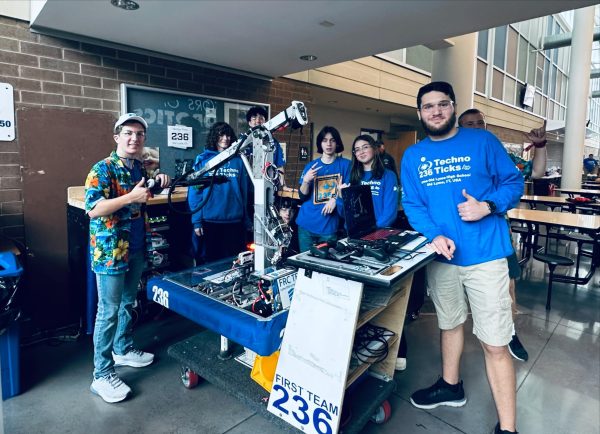A call for STEM workers: How is LOLHS reacting?
The graduation requirements for the class of 2023 have been modified in comparison to last year’s with a distinction between the regular math and sciences classes and their seven miscellaneous electives. For the class of 2023, there are now three math and science credits, then three more credits from electives in science, math, technology, business and engineering that have been established. This is an obvious shift toward the need for STEM workers within these now concrete details. This is reasonable considering the recent demand in this field. Compared to the 2.4 million STEM jobs unfilled in 2018, 2021 estimates reveal that will has increased by over a million more jobs by 2025(ID Tech). In more present times, considering what jobs have been revealed to us as essential, LOLHS may have coincidentally aided to the altered predictions in the future of the workplace.
In light of the pandemic, our apparel and party planning is not the only thing that’s changed. As we know, the pandemic asked greatly of essential workers. As defined by the NCSL (National Conference of State Legislators) an essential worker are people in the fields of, “Energy, child care, water and wastewater, agriculture and food production, critical retail…critical trades…transportation, nonprofits and social service organizations”(National Conference). You may have noticed that most of these do fall under STEM categories. Service, business, nursing–all majors the new graduation requirements have accounted to guide students toward.
But how are the students feeling about STEM classes? A recent poll from Gallup Youth shows that with 23% of kids having an interest in math and 14 % for the sciences, the numbers are almost even to the 20% average for classes like history and English (Ray). Essentially, one side is on board and the other may be a little hesitant to do so. But thankfully for the opposition, these statistics also prove that although we might worry the humanities will be washed out by this new demand, that’s not very foreseeable with how much support they have from the student body. Even as schools guide their requirements toward the predicted growing fields it will always come down to the preferences of the students and whether we chose to follow into the growing works, or head a separate way.
Works Cited
ID Tech, Ryan. “The state of STEM education told through 16 stats.” STEM Education Statistics, 11 Aug. 2020, www.idtech.com/blog/stem-education-statistics#:~:text=The%20state%20of%20STEM%20education%20told%20through%2016%20stats&text=If%20we’ve%20said%20it,to%20be%20filled%20by%202025. Accessed 7 Apr. 2021.
National Conference of State Legislators. “COVID-19: Essential Workers in the States.” National Conference of State Legislators, 11 Jan. 2021, www.ncsl.org/research/labor-and-employment/covid-19-essential-workers-in-the-states.aspx#:~:text=According%20to%20the%20U..S,energy%20to%20defense%20to%20agriculture. Accessed 7 Apr. 2021.
Ray, Julie. “What’s Your Favorite Course in School?” GALLUP, 22 Apr. 2003, news.gallup.com/poll/8248/report-card-teens-favorite-subjects.aspx#:~:text=Bottom%20Line-,Math%20and%20science%20top%20the%20list%20of%20teens’%20favorite%20school,becoming%20proficient%20in%20these%20areas. Accessed 7 Apr. 2021. Chart.











